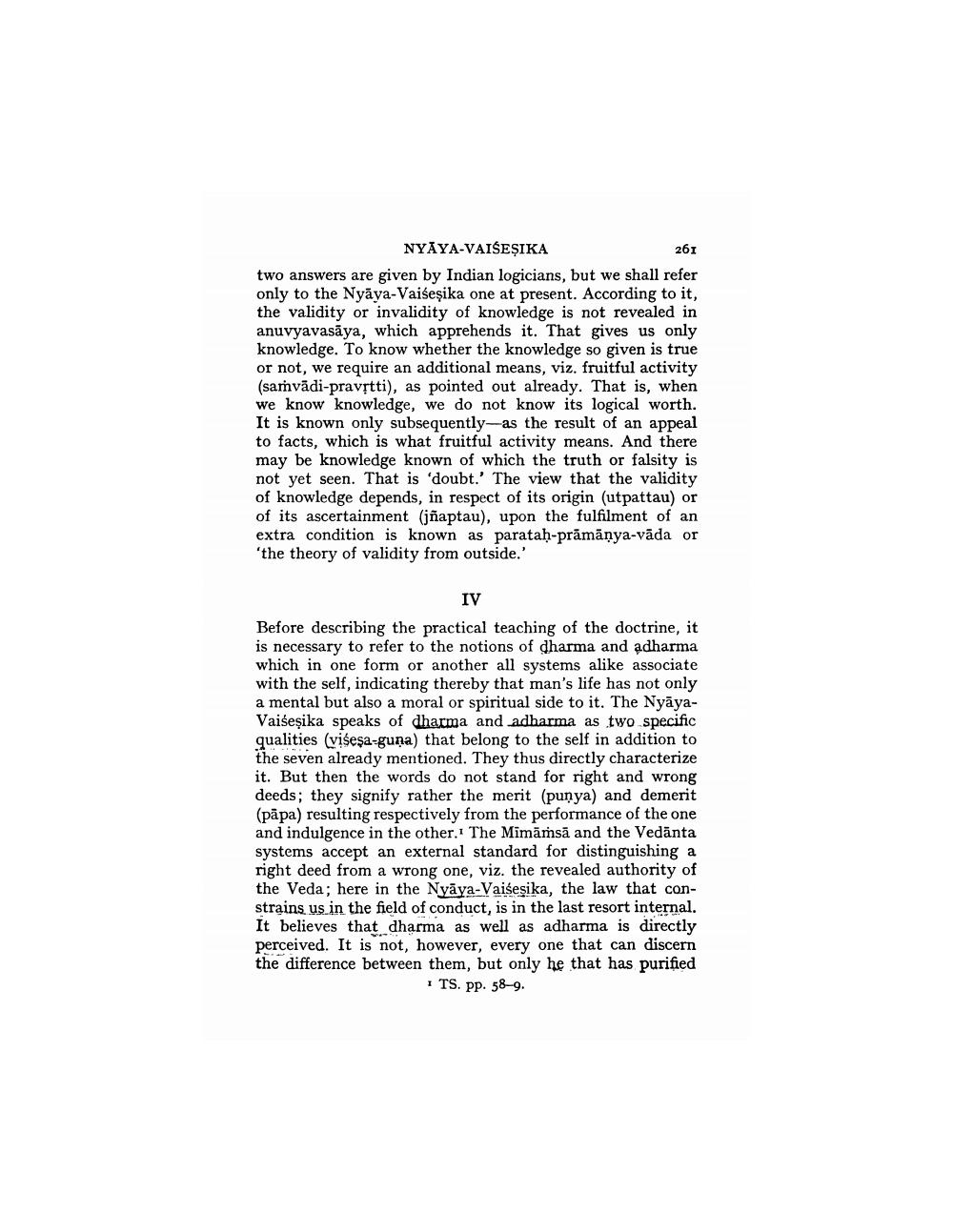________________
NYAYA-VAISEȘIKA
261 two answers are given by Indian logicians, but we shall refer only to the Nyāya-Vaiseșika one at present. According to it, the validity or invalidity of knowledge is not revealed in anuvyavasāya, which apprehends it. That gives us only knowledge. To know whether the knowledge so given is true or not, we require an additional means, viz. fruitful activity (samvādi-pravstti), as pointed out already. That is, when we know knowledge, we do not know its logical worth. It is known only subsequently-as the result of an appeal to facts, which is what fruitful activity means. And there may be knowledge known of which the truth or falsity is not yet seen. That is 'doubt.' The view that the validity of knowledge depends, in respect of its origin (utpattau) or of its ascertainment (jñaptau), upon the fulfilment of an extra condition is known as paratah-prämänya-vāda or 'the theory of validity from outside.'
IV
Before describing the practical teaching of the doctrine, it is necessary to refer to the notions of dharma and adharma which in one form or another all systems alike associate with the self, indicating thereby that man's life has not only a mental but also a moral or spiritual side to it. The NyāyaVaišesika speaks of dharma and adharma as two specific qualities (visesa-guna) that belong to the self in addition to the seven already mentioned. They thus directly characterize it. But then the words do not stand for right and wrong deeds; they signify rather the merit (punya) and demerit (pāpa) resulting respectively from the performance of the one and indulgence in the other. The Mimämsä and the Vedānta systems accept an external standard for distinguishing a right deed from a wrong one, viz. the revealed authority of the Veda; here in the Nyāya-Vaišeşika, the law that constrains us in the field of conduct, is in the last resort internal. It believes that dharma as well as adharma is directly perceived. It is not, however, every one that can discern the difference between them, but only he that has purified
1 TS. pp. 58-9.




